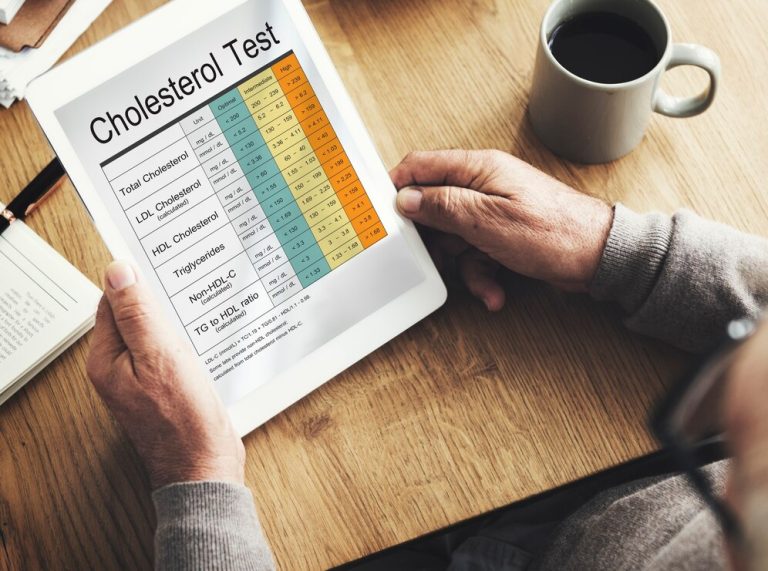Definition and Overview
Inpatient addiction rehab programs, often referred to as residential treatment, offer a structured and immersive environment for individuals battling substance abuse. These programs require patients to reside within the facility for the duration of their treatment, providing a controlled setting that is conducive to recovery. Unlike outpatient programs, where individuals return home after therapy sessions, inpatient rehab ensures that patients are surrounded by a supportive community and professional care around the clock. This constant supervision and support can be particularly beneficial for those with severe addictions, as it minimizes exposure to external triggers and distractions that might impede recovery.
Key Differences from Outpatient Programs
The primary distinction between inpatient and outpatient rehab programs lies in the living arrangements and intensity of care. Inpatient programs require individuals to stay at the treatment center full-time, which allows for continuous monitoring and immediate access to medical and psychological support. This setup is ideal for individuals who need intensive care and a break from their usual environment, which might be filled with triggers and stressors. On the other hand, outpatient programs offer more flexibility, allowing individuals to maintain their daily responsibilities, such as work or school, while attending treatment sessions. However, this flexibility might not provide the same level of support and focus on recovery as inpatient programs.
Who Can Benefit from Inpatient Rehab
Inpatient rehab is particularly suited for individuals with severe substance use disorders or those who have not succeeded with outpatient treatment options. It is also beneficial for those who live in environments that might hinder their recovery efforts, such as situations where there is ongoing substance use or lack of support. The immersive nature of inpatient rehab allows individuals to step away from their everyday lives and focus solely on recovery, surrounded by peers who are undergoing similar experiences. This shared journey can foster a sense of camaraderie and mutual support. Additionally, the comprehensive care provided in inpatient settings can address co-occurring mental health issues, providing a holistic approach to treatment.
The Importance of a Structured Environment in Inpatient Rehab
Inpatient rehabilitation offers a structured environment that is crucial for those on the path to recovery. This structured setting is designed to provide a stable, predictable routine that helps individuals focus on healing without the distractions of everyday life. Let’s explore the elements that make this environment so effective.
Daily Schedules and Routines
One of the key components of inpatient rehab is the establishment of daily schedules and routines. These schedules are meticulously planned to keep patients engaged in various therapeutic activities throughout the day. From morning to night, individuals participate in therapy sessions, group activities, and personal reflection time. This constant engagement helps prevent the mind from wandering to thoughts of substance use, making it easier for patients to concentrate on their recovery journey.
Supervision and Monitoring
Having 24/7 supervision and monitoring is another significant advantage of inpatient rehab. This around-the-clock care ensures that patients have immediate access to medical and psychological support whenever needed. The presence of trained professionals allows for quick intervention if any issues arise, whether they are related to withdrawal symptoms or emotional distress. This level of supervision provides patients with a sense of safety and security, knowing they are never alone in their struggle.
Minimizing Distractions and Triggers
Inpatient rehab facilities are specifically designed to minimize distractions and triggers that could lead to relapse. By removing individuals from environments where they might encounter stressors or temptations, these programs create a safe haven for recovery. Patients can focus entirely on their healing process without the interference of outside influences. This separation from the usual triggers of everyday life is vital for those who need to break free from the cycle of addiction.
Overall, the structured environment of inpatient rehab plays a pivotal role in the recovery process. By providing a stable routine, constant supervision, and a distraction-free setting, these programs give individuals the best possible chance to rebuild their lives and achieve lasting sobriety.
Comprehensive Medical and Psychological Support
Inpatient rehab programs offer a unique environment where medical and psychological support is available around the clock. This continuous care is especially important for those dealing with severe addiction, as it ensures immediate assistance in case of any complications. With medical professionals always on hand, patients can safely navigate the physical challenges of withdrawal and detoxification, reducing the risk of relapse or medical emergencies.
The psychological support provided in these settings is equally crucial. Access to mental health professionals allows for the treatment of underlying psychological issues that often accompany addiction. Patients can engage in therapy sessions that help them understand their behaviors and develop healthier coping mechanisms. This dual focus on both the mind and body is what sets inpatient programs apart from other forms of treatment.
24/7 Medical Care
Having access to medical care at any time of the day or night is a cornerstone of inpatient rehab facilities. This constant availability means that any medical issues can be addressed promptly, which is vital for those undergoing detoxification. The presence of healthcare professionals ensures that patients receive the necessary medical attention, helping them manage withdrawal symptoms safely and effectively.
Access to Mental Health Professionals
Inpatient rehab programs provide direct access to mental health experts who can offer personalized care and guidance. These professionals work with patients to identify and treat co-occurring mental health disorders, such as depression or anxiety, which are often linked to substance abuse. By addressing these issues, patients are better equipped to understand their addiction and begin the healing process.
Integrated Treatment for Co-occurring Disorders
Many individuals struggling with addiction also face mental health challenges. Inpatient rehab centers are designed to treat both issues simultaneously, offering an integrated approach that considers the whole person. This approach not only addresses the addiction itself but also the underlying psychological conditions that may be contributing to it. By doing so, patients receive a more comprehensive treatment that can lead to lasting recovery.
The Role of Detoxification in Inpatient Rehab
Medical Supervision During Detox
Detoxification is a critical first step in the journey to recovery from addiction. It’s the process of allowing the body to rid itself of a drug while managing the symptoms of withdrawal. In an inpatient rehab setting, this process is closely monitored by medical professionals. This supervision is vital because withdrawal symptoms can be severe and, in some cases, life-threatening. Medical staff are on hand to provide medications that can ease these symptoms and make the detox process more comfortable. The constant medical support helps ensure that detox is not only safer but also more manageable for the patient.
Managing Withdrawal Symptoms
Withdrawal symptoms vary depending on the substance and the duration of use. Common symptoms can include nausea, anxiety, insomnia, and even seizures. In an inpatient facility, these symptoms are carefully managed with the help of medical professionals who can administer appropriate medications and therapies. The goal is to reduce discomfort and prevent any complications that might arise during this vulnerable period. Having access to round-the-clock care means that any issues can be addressed immediately, providing a level of safety that is hard to achieve in an outpatient setting.
Importance of a Safe Detox Environment
The environment in which detoxification occurs can significantly impact the success of the process. Inpatient rehab provides a controlled and supportive setting away from the triggers and stresses of everyday life. This separation from outside influences helps reduce the risk of relapse and allows individuals to focus entirely on their recovery. The structured environment of inpatient rehab ensures that patients are not only physically safe but also emotionally supported, which is crucial during the challenging detox phase. This safe space is an integral part of the detox process, laying a strong foundation for the rest of the treatment journey.
Therapeutic Approaches in Inpatient Rehab
Individual Therapy Sessions
In inpatient rehab programs, individual therapy is a cornerstone of treatment. This approach allows therapists to work closely with patients, providing a private space to explore personal issues related to addiction. These one-on-one sessions help patients uncover the root causes of their substance use, whether they stem from trauma, stress, or other underlying mental health conditions. Through consistent therapy, individuals can develop coping strategies tailored to their specific needs. This personalized attention ensures that each patient receives a treatment plan that aligns with their unique circumstances, promoting a deeper understanding of their own behaviors and triggers.
Group Therapy Dynamics
Group therapy is another vital component of inpatient rehab, offering patients the chance to connect with others who are on similar journeys. These sessions provide a supportive environment where individuals can share experiences and insights, fostering a sense of community and belonging. Group dynamics encourage participants to engage with one another, building trust and empathy. This collective approach not only helps individuals feel less isolated but also allows them to learn from the challenges and successes of their peers. The shared experience of recovery can be a powerful motivator, reinforcing the commitment to sobriety.
Family Involvement and Therapy
Family therapy plays a crucial role in the therapeutic process during inpatient rehab. Addiction often affects not just the individual but also their loved ones, creating a ripple effect of emotional and psychological challenges. Involving family members in therapy sessions helps to address these issues, promoting healing and understanding within the family unit. These sessions aim to improve communication, resolve conflicts, and rebuild trust. By engaging families in the recovery process, inpatient programs can create a supportive network that extends beyond the treatment facility, aiding long-term recovery and reducing the risk of relapse. This inclusive approach recognizes that a strong family support system is integral to sustained sobriety.
Building a Supportive Community
Peer Support and Shared Experiences
Inpatient rehab programs offer a unique setting where individuals can connect with others who are facing similar challenges. This shared journey creates a sense of camaraderie and understanding that is often hard to find elsewhere. Patients find themselves surrounded by peers who genuinely understand their struggles, providing an environment where they can openly discuss their experiences without fear of judgment. This peer support is crucial, as it helps individuals realize they are not alone in their fight against addiction, fostering a sense of belonging and mutual encouragement.
Developing Long-term Friendships
The bonds formed during inpatient treatment often extend beyond the program itself, leading to long-term friendships that continue to provide support and motivation. These friendships are built on a foundation of shared experiences and mutual goals, creating a network of support that patients can rely on even after they leave the facility. The continuity of these relationships plays a significant role in maintaining sobriety, as former patients can lean on each other during challenging times, celebrate milestones, and offer advice based on their own recovery journeys.
Community Activities and Engagement
Inpatient rehab centers often organize various activities and events that encourage community engagement and interaction. These activities are designed not only to provide entertainment and relaxation but also to help patients develop social skills and build confidence in interacting with others. Whether it’s group therapy sessions, recreational activities, or educational workshops, these engagements play a vital role in helping individuals reconnect with the world around them in a positive and constructive manner. By participating in these activities, patients learn to enjoy life without substances, discovering new interests and hobbies that can be pursued after treatment.
Privacy and Confidentiality in Inpatient Rehab
Ensuring Patient Privacy
When individuals enter an inpatient rehab program, they often seek a sanctuary where their personal struggles are kept confidential. These facilities are designed to provide a private environment that feels safe and secure, allowing patients to focus entirely on their recovery journey. Unlike outpatient programs where patients might worry about encountering acquaintances or colleagues, inpatient settings offer a level of anonymity that is often crucial for those seeking treatment. The emphasis on privacy helps in building trust between patients and their caregivers, ensuring that personal information and treatment details remain protected.
Confidential Treatment Plans
Inpatient rehab centers prioritize the confidentiality of their treatment plans, tailoring them to meet the unique needs of each individual. This personalized approach not only respects patient privacy but also enhances the effectiveness of the treatment. The staff is trained to handle sensitive information discreetly, ensuring that all communications and records are kept secure. Patients can rest assured that their progress, challenges, and any setbacks are shared only with those directly involved in their care. This commitment to confidentiality extends to all interactions within the facility, fostering an environment where patients can openly discuss their issues without fear of judgment or exposure.
Safe and Secure Environment
Inpatient rehab facilities are structured to provide a safe and secure environment for their residents. This includes stringent security measures to prevent unauthorized access to the premises, ensuring that patients are not disturbed by external factors. The controlled setting minimizes distractions and potential triggers, which is essential for effective recovery. Patients can focus on their treatment without the stress of outside influences, knowing that their privacy is a top priority. Such an environment not only supports the healing process but also reinforces the patient’s sense of dignity and respect, helping them to regain control over their lives. The assurance of patient confidentiality and privacy is a fundamental aspect of inpatient rehab, making it a preferred choice for many seeking to overcome addiction.
Nutritional and Physical Health Benefits
Access to Balanced Meals
Inpatient rehab centers ensure that individuals have access to nutritious meals. This is crucial because proper nutrition can significantly impact recovery. Many who struggle with addiction often neglect their diet, leading to deficiencies that can affect both physical and mental health. In a rehab setting, meals are planned to provide the necessary nutrients that aid in healing the body and mind. These meals not only help in restoring physical health but also play a role in stabilizing mood and improving overall well-being.
Incorporating Physical Fitness
Physical fitness is a key component of inpatient rehab programs. Regular exercise is encouraged, as it helps in reducing stress and anxiety, which are common during recovery. Exercise also boosts endorphin levels, promoting a sense of happiness and accomplishment. Rehab centers often provide facilities like gyms or outdoor spaces where individuals can engage in various physical activities. Whether it’s yoga, swimming, or simple morning walks, these activities support the recovery process by improving physical health and providing a positive outlet for emotions.
Holistic Health Approaches
Inpatient rehab programs often adopt holistic approaches to health, focusing on the mind-body connection. This means that alongside traditional treatments, there are opportunities for practices like meditation, acupuncture, and mindfulness exercises. These practices aim to enhance mental clarity and emotional stability, which are essential for long-term recovery. By addressing both the physical and mental aspects of health, holistic approaches help individuals build a strong foundation for a healthier lifestyle post-rehab.
Long-term Success and Relapse Prevention
Developing Coping Strategies
Inpatient addiction rehab programs are designed to equip individuals with the tools they need for long-term success. One of the most important aspects of this is developing coping strategies. Patients learn how to handle stress and triggers without resorting to substance use. This is achieved through various therapies and activities that help individuals identify their personal triggers and develop healthy responses. The structured environment of inpatient rehab provides a safe space to practice these strategies, ensuring individuals are better prepared to face challenges once they leave the facility.
Aftercare and Continued Support
A key component of achieving long-term sobriety is having a solid aftercare plan. Refine Recovery offers tailored aftercare planning to help individuals maintain long-term sobriety and foster a healthy, sober lifestyle. Aftercare programs often include regular check-ins, support group meetings, and continued therapy sessions. These resources help individuals stay connected to the recovery community and provide ongoing support as they transition back into their daily lives. The continuity of care ensures that individuals have access to the help they need whenever they face potential relapse triggers.
Measuring Success Rates
Measuring success rates in addiction recovery can be challenging, as each individual’s journey is unique. However, inpatient rehab programs often report higher success rates compared to outpatient programs. This is largely due to the comprehensive support system and the immersive environment that inpatient facilities provide. Success is not only measured by the absence of substance use but also by improvements in overall quality of life, including emotional and social well-being. By focusing on holistic recovery, inpatient programs aim to achieve lasting change and prevent relapse.
Specialized Programs and Personalized Care
Tailored Treatment Plans
Inpatient rehab programs often provide specialized programs that cater to the unique needs of each patient. These programs are designed to address specific types of addiction, whether it be alcohol, opioids, or other substances. The aim is to create a treatment plan that aligns with the individual’s personal challenges and goals. This personalized approach ensures that patients receive the most effective care possible, allowing them to focus on their recovery without the distraction of a one-size-fits-all strategy.
Specialized Programs for Different Addictions
Different addictions require different treatment methods, and inpatient rehab centers understand this necessity. Facilities offer specialized programs that target specific substances, making sure that the therapy is relevant and effective. These programs are not only about addressing the addiction itself but also about understanding the underlying factors that contribute to it. By focusing on the particular substance and its effects, these programs can provide more targeted support, increasing the chances of successful recovery.
Adapting to Individual Needs
Every patient entering an inpatient rehab facility has a unique story and set of circumstances. Recognizing this, rehab centers strive to adapt their treatment approaches to meet individual needs. This might involve adjusting therapy sessions, incorporating family counseling, or providing additional mental health support. The goal is to create a supportive environment where patients feel understood and can engage fully in their recovery process. By tailoring their care to fit each person’s situation, inpatient rehab programs can offer more than just treatment—they provide a path to lasting change.
The Financial Considerations of Inpatient Rehab
Understanding Costs and Insurance
Inpatient rehab programs can be quite pricey, often more than outpatient options. This is due to the round-the-clock care, medical supervision, and residential facilities provided. The costs can vary widely depending on the location, duration, and specific services offered by the facility. Some programs might charge thousands of dollars per day, while others could be more affordable. It’s crucial to understand that while the initial price tag might seem steep, the long-term benefits of recovery can outweigh these costs. Many insurance plans do cover part or all of the expenses associated with inpatient rehab, so it’s important to check with your provider about what’s included. This can significantly reduce the financial burden and make treatment more accessible.
Financial Assistance Options
For those without insurance or with limited coverage, financial assistance options are available. Some facilities offer sliding scale fees based on income, while others might have payment plans to help spread out the costs. There are also scholarships or grants provided by certain organizations aimed at helping individuals access the treatment they need. Exploring these options can open doors to receiving quality care without the stress of overwhelming debt.
Value of Investment in Recovery
While the costs of inpatient rehab might be high, it’s essential to view this as an investment in one’s future. The comprehensive care provided in these settings not only addresses the addiction but also supports mental and physical health, paving the way for a more stable and fulfilling life post-recovery. Compared to the ongoing costs of addiction, which include not just financial but also emotional and social tolls, investing in rehab can lead to substantial savings and improved quality of life in the long run. Addiction treatment costs vary significantly, with some programs offered for free and others charging thousands of dollars per day addiction treatment costs vary.











